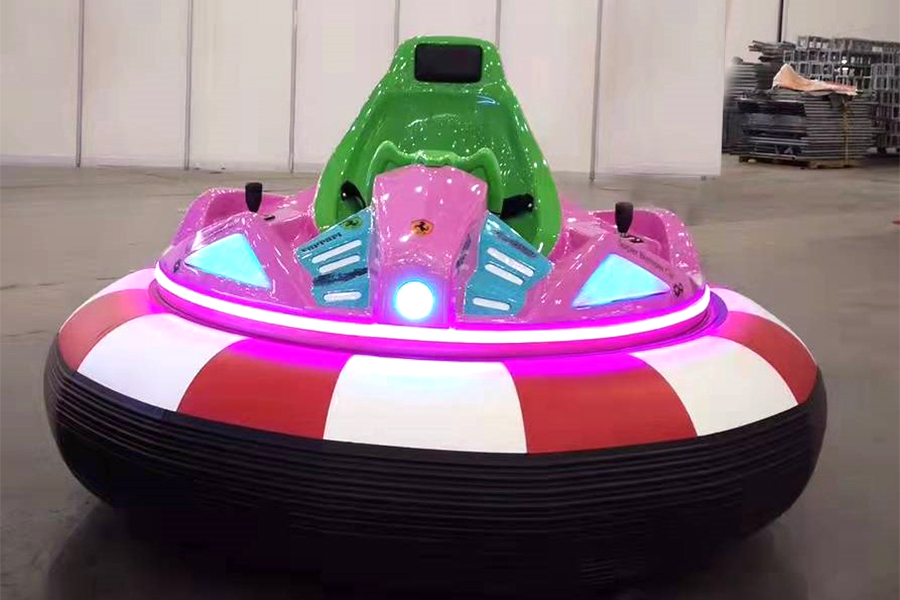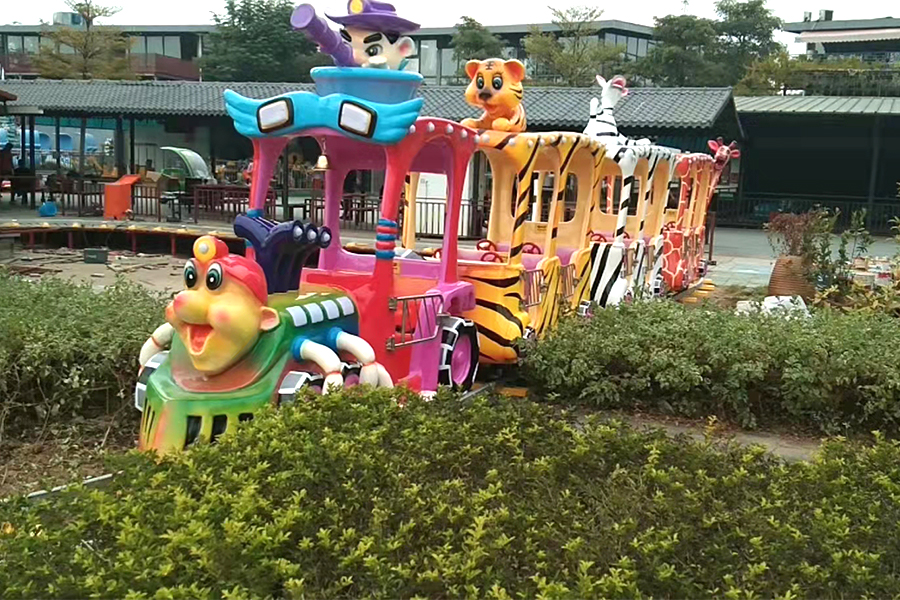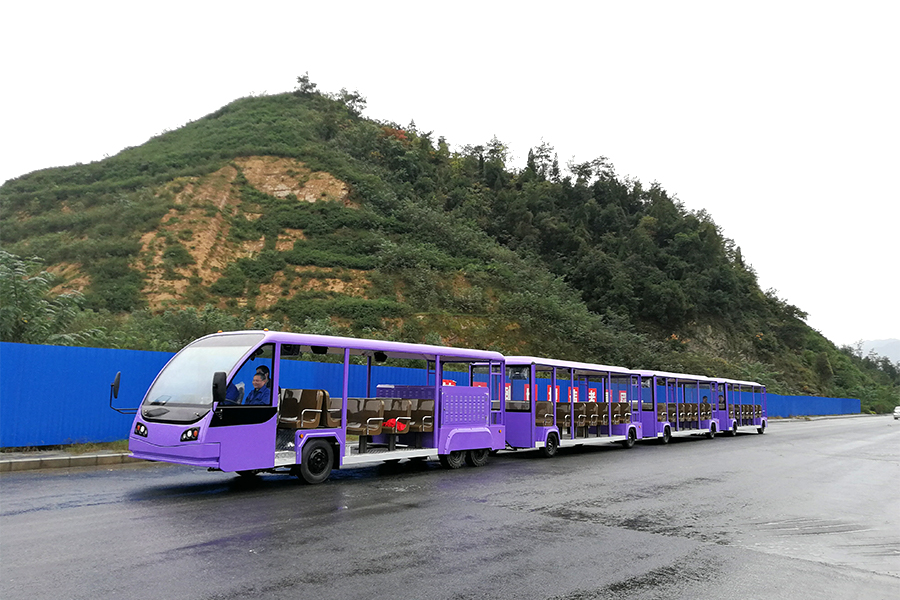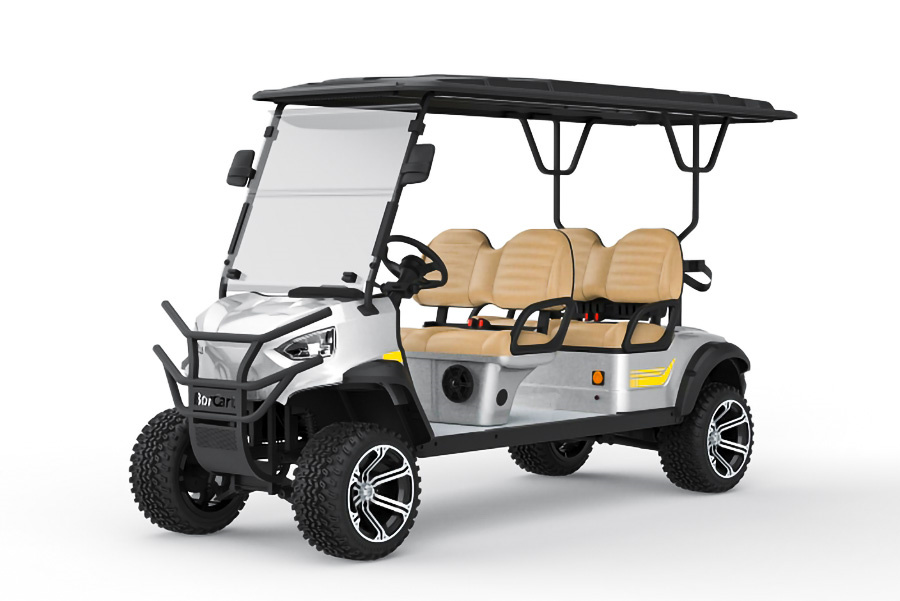Connaissance de l'industrie
Quels sont les pièces et accessoires courants pour chariots de golf ?
Batteries : Les batteries de la voiturette de golf fournissent la puissance nécessaire au fonctionnement du moteur électrique. La mise à niveau vers des batteries de haute qualité ou de capacité supérieure peut améliorer la portée et les performances de la voiturette de golf.
Pneus et roues : La mise à niveau vers des pneus et des roues de chariot de golf spécialisés peut améliorer la traction, la stabilité et l'apparence générale du chariot. Différents motifs et matériaux de bande de roulement sont disponibles en fonction de l'utilisation souhaitée et des conditions de terrain.
Pare-brise : Les pare-brise des voiturettes de golf protègent les occupants du vent, de la poussière et des débris pendant la conduite. Ils peuvent être faits de divers matériaux, tels que le verre ou l'acrylique incassable, et peuvent être pliables ou fixes.
Enceintes : Les enceintes offrent une protection contre les intempéries aux occupants d'une voiturette de golf. Ils se composent généralement d'un auvent ou d'un toit, de rideaux latéraux et d'un panneau arrière. Les enclos sont particulièrement utiles dans les régions aux intempéries ou pour jouer au golf toute l'année.
Sièges et housses de siège : La mise à niveau ou le remplacement des sièges de voiturette de golf peut améliorer le confort et l'esthétique. Les housses de siège en matériaux durables et résistants aux intempéries peuvent protéger les sièges de l'usure.
Kits de levage : Les kits de levage augmentent la hauteur de caisse de la voiturette de golf, permettant une garde au sol accrue. Cette modification est populaire pour les chariots tout-terrain ou utilitaires qui doivent naviguer sur un terrain accidenté. Les kits de levage comprennent souvent des composants de suspension spécialisés et des pneus plus gros.
Lumières : les systèmes d'éclairage des voiturettes de golf comprennent les phares, les feux arrière, les feux de freinage, les clignotants et l'éclairage intérieur. La mise à niveau vers des lumières LED peut améliorer la visibilité et l'efficacité énergétique.
Sièges arrière et lits de chargement : L'ajout d'un kit de siège arrière ou d'un lit de chargement à une voiturette de golf augmente la capacité des passagers ou offre un espace supplémentaire pour transporter de l'équipement, des outils ou des fournitures.
Rétroviseurs : les rétroviseurs de voiturette de golf, tels que les rétroviseurs extérieurs ou les rétroviseurs, améliorent la visibilité et la sécurité pendant la conduite. Ils sont particulièrement utiles lors de l'utilisation du chariot sur la voie publique ou dans des zones surpeuplées.
Accessoires de rangement et d'organisation : il s'agit d'articles tels que des porte-clubs de golf, des boîtes à gants, des porte-gobelets et des compartiments de rangement conçus pour garder les effets personnels et l'équipement de golf organisés et facilement accessibles.
Attaches pour sac de golf : ces accessoires fixent les sacs de golf au chariot, les empêchant de se déplacer ou de tomber pendant le transport. Ils peuvent prendre la forme de sangles, de supports ou de supports spécialisés.
Accessoires de protection contre les intempéries : Des accessoires supplémentaires, tels que des housses de pluie, des housses de rangement ou des abris d'hiver, offrent une protection supplémentaire contre la pluie, le soleil, la neige ou d'autres conditions météorologiques.
Chargeurs de batterie : les chargeurs de batterie de chariot de golf assurent une charge et un entretien appropriés des batteries. La mise à niveau vers un chargeur intelligent ou des options de charge plus rapides peut améliorer la commodité et la durée de vie de la batterie.
Housses de voiturette de golf : les housses conçues spécifiquement pour les voiturettes de golf protègent l'ensemble du véhicule lorsqu'il n'est pas utilisé, le protégeant de la poussière, du soleil, de la pluie et d'autres éléments extérieurs.
Systèmes GPS et audio : des systèmes de navigation GPS et des systèmes audio en option peuvent être installés pour fournir des fonctions de divertissement, de communication et de navigation pendant l'expérience de golf.
Ce ne sont là que quelques exemples de la vaste gamme de pièces et d'accessoires disponibles pour les voiturettes de golf. Les options spécifiques et la compatibilité peuvent varier selon la marque, le modèle et l'année de la voiturette de golf.


 Langue
Langue



















